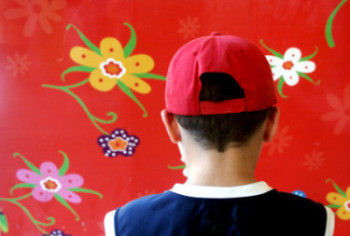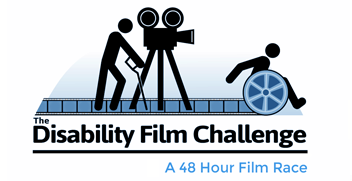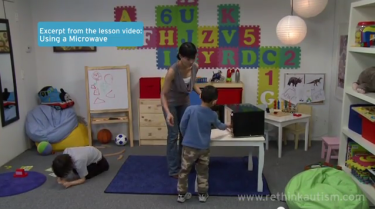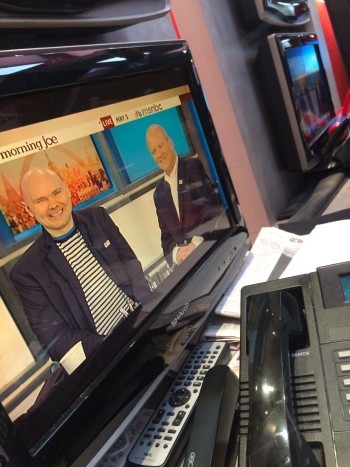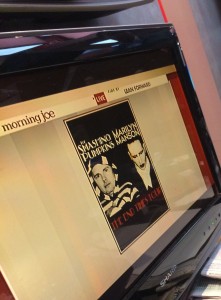by Beth Finke
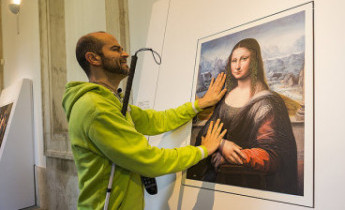
A blind visitor at Spain’s Prado museum. (Ignacio Hernando Rodriguez/Courtesy of Prado Museum)
Yesterday National Public Radio’s Morning Edition show ran a special feature about how Spain’s famous Prado Museum has made 3-D copies of some works in its collection so that people who are blind can feel them.
Ho hum.
The Art Institute of Chicago has been doing this for years. They provide 3-D and 2-D representations of some of the most renowned works in their collection, and these “TacTiles” are meant to help people who can’t see interpret the artwork. I got a special one-on-one tour of the Art Institute’s special programs once from Lucas Livingston (Assistant Director of Senior Programs at the Art Institute) and the poor guy had his work cut out for him.
At best, I’m ambivalent about these special programs. I credit museums and theaters and institutions for trying. I really do. And some special accommodations–like the advance tour before plays at Chicago’s Steppenwolf Theatre here in Chicago — have truly enriched my experience.

Me, my Seeing Eye dog Harper and our gracious Steppenwolf hosts Hilary and Malcolm, on stage during the touch tour for Who’s Afraid of Virginia Woolf?
But when it comes to static, visual art, none of the special services I’ve tried have been particularly satisfying or enlightening.
My tour at the Art Institute began with four busts in the Elizabeth Morse Touch gallery, each made of bronze and marble from different time periods and locations so I could compare medium and style. The touch gallery was created with blind people in mind (each bust is labeled in both large type and Braille) but anyone can go in there and touch them. The Art Institute website suggests that through touch, visitors can “discern an artwork’s form, scale, temperature, and texture in ways that sight cannot.”
Hands might be good at judging temperature and texture, but my experience during my Art Institute tour did not convince me that one can discern form and scale any better with the sense of touch than with sight.
From there, Lucas guided my Seeing eye dog and me over to a gallery to take in Renoir’s “Two Sisters”, one of five masterpieces represented by a TacTile — two-dimensional tiles (each one about the size of an iPad) that represent a painting and include a description of the piece in large font print and Braille. It wasn’t until we got to the Medieval to Modern European Art gallery that Lucas remembered, uh-oh, “Two Sisters” was gone!
I can’t remember if Lucas said “Two Sisters”was being cleaned or lent to another museum, but after he got over his initial embarrassment, we both had to laugh. I didn’t need the painting there anyways. I stood where it used to hang and felt the textured tile while Lucas described “Two Sisters” from memory.
We had better luck finding the other paintings represented by TacTiles, but the Two Sisters experience left me wondering. What was the point of going to where the painting was? Maybe to hear what people around you are saying about the art? The day of my tour happened to have been a slow day, though. We were the only ones at each of the paintings I felt my way through.
Lucas told me that with 3D printing more accessible now, the Art Institute might create 3D printed pieces in addition to the TacTiles. They already have 3D replicas of some of the sculpture in the museum, and when we got to a statue of Buddha, Lucas placed a 3D replica in my hand. “What’s the antenna coming out of the top of his head?” I asked. It was a flame. At another Asian exhibit, everything was behind glass. Lucas placed a small bronze container in my hand, I guessed it was a cup, but it was a bell. “One of our interns here made it,” Lucas said, explaining that the intern worked in bronze and had cast a replica of an antique bell that was behind the glass we were standing in front of.
Adapting visual artwork for the blind, curating special tactile art exhibits, creating 3-D renditions of popular pieces of art. Good people have gone to such great lengths to help visually impaired people enjoy the art, that it can leave me feeling guilty when I don’t. For me, the simple truth is that the sense of touch is nothing like the sense of sight. Touch is too particular. Whether it be a bust I can touch, a TacTile, or a 3-D rendition, I can only touch one tiny bit of the artwork at a time. It’s just not the same as when I could glance at a piece of art. My interpretation is limited to a part of the piece that’s just one fingertip wide.
I lost my sight in my 20s, and one thing that helped me adjust was figuring out what I could still enjoy (I can’t ride my bike anymore, but I still ride a tandem; I don’t enjoy movies much now, but I can go to live theater, where the emphasis is more on dialogue than special effects) and things I shouldn’t bother with (I can’t see art, so I don’t go to art museums). The Art Institute of Chicago offers audio art guides for free for visitors who are blind or with low vision and their escorts, but the idea of paying to get into a museum so I can walk around listening to a monologue isn’t appealing to me.
I don’t speak for all blind people–and because I used to be able to see, my experience is probably substantially different than someone who has been without sight their entire lifetime. I can imagine the experience of helping someone who has never been able to see to conceptualize. Or maybe if someone has a visual impairment but can still see a little bit, the “tactile” will help complete the picture for them. But not for me.
 On Wednesday we published a post I wrote about an accomodation that doesn’t work so well for me — how about today I write about one that does?!
On Wednesday we published a post I wrote about an accomodation that doesn’t work so well for me — how about today I write about one that does?!













